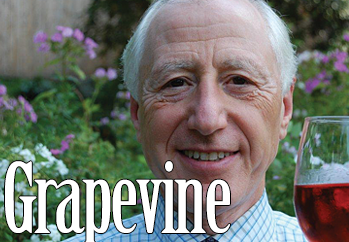How Much is Price an Indicator of Wine Quality?
Opinion Advocates for ideas and draws conclusions based on the author/producer’s interpretation of facts and data.
 I’m often asked about the price-to-quality factor in wine purchases. Readers want to know if “standard brands” are good values and if artisanal wines produced by small wineries are worth the extra investment.
I’m often asked about the price-to-quality factor in wine purchases. Readers want to know if “standard brands” are good values and if artisanal wines produced by small wineries are worth the extra investment.
By now most of you can anticipate my response: “If you like a particular wine, then it’s a good wine for your particular palate, whether it’s a $9 by-the-bottle or by-the-box wine, or a $25 pedigreed bottle.”
There are relative merits and detriments of enjoying wines at differing price points. Most of my discussions progress from the origin of a wine to production methods and marketing campaigns.
Production methods. Many consumers believe the process for making wine is similar for all bottlings. Further, the supposition is that all grapes are gently hand-picked at the epitome of ripeness – carefully sorted for leaves, rotten grapes and insects – then lovingly crushed, fermented, aged and bottled. All under the watchful eye of a master winemaker.
Although this process does occur in many wineries, it as a far cry from the vast quantity of wines sold in the United States.
For the most part, winemaking is big business. More than 80 percent of wines produced and sold in the United States come from about 2 percent of the number of producers. At these mega wine factories, massive quantities of grapes are harvested by industrial-size machines. Rotten grapes, leaves, twigs and unlucky insects may adulterate the wine juice until they are filtered out.
In addition, winery chemists and engineers are responsible for blending grape juices to create consistent wines each year.
Add to this mix the countless virtual wineries in the United States – wineries that have no direct hand in the production of wine. These companies contract with wholesale producers who may have grown the grapes or simply purchased the grapes (or juice). The wholesalers then produce the wine and bottle it according to the specifications of the virtual winery.
Of the top 30 brands in the United States, only a small handful of wineries are involved from start to finish. Very few grow their own grapes and produce or bottle the wine. This works well to meet consumer demand. Last year American wineries produced over 750 million gallons of wine (80 percent in California). That’s over 3.7 billion bottles, of which nearly three billion were produced by 2 percent (less than 100) of domestic wine companies.
All of this is done in an effort to present consumers with inexpensive wine that has a consistent flavor profile. You know the wines: the mass-produced bargain wines priced at $6 to $8 a bottle. You’ve experienced the wines: at restaurants, weddings, charity dinners, pool parties. Pleasing wines at great prices, what’s wrong with that?
In an absolute world, nothing. But many smaller producers have leveraged their wines to capitalize on consumer expectations. Across the winemaking world, value wines are being handcrafted with hands-on expertise. From small producers (5,000 cases or less) in the United States to family-owned wineries in Spain, Portugal, Chile, Argentina, South Africa and even France and Italy, excellent wines are now available in the $10-to-$16 price range.
Most of these wines are head and shoulders above their mass-produced counterparts. They have a soul, a unique flavor profile that is attained from close oversight of growing and production techniques that modern technology provides.
Marketing campaigns. The wine giants can be extremely creative in developing label designs and brand names. A number of wine labels sport artwork of bucolic vineyards and workers lovingly tending vines. They are perfect images to entice consumers. In fact, mass producers rarely visit, let alone tend, the massive vineyards from which they grow or purchase grapes. Is this inventive marketing or deceptive advertising?
As occurs frequently with the discerning palate, individual judgments are key in wine-buying decisions. The competition for shelf space and for sales volume can be confusing, even misleading. Discerning consumers seek advice from reputable wine shop merchants to consider their numerous choices regarding price and quality.
Nick Antonaccio is a 45-year Pleasantville resident. For over 25 years, he has conducted wine tastings and lectures. Nick is a member and program director of the Wine Media Guild of wine journalists. He also offers personalized wine tastings. Nick’s credo: continuous experimenting results in instinctive behavior. You can reach him at nantonaccio@theexaminernews.com.
